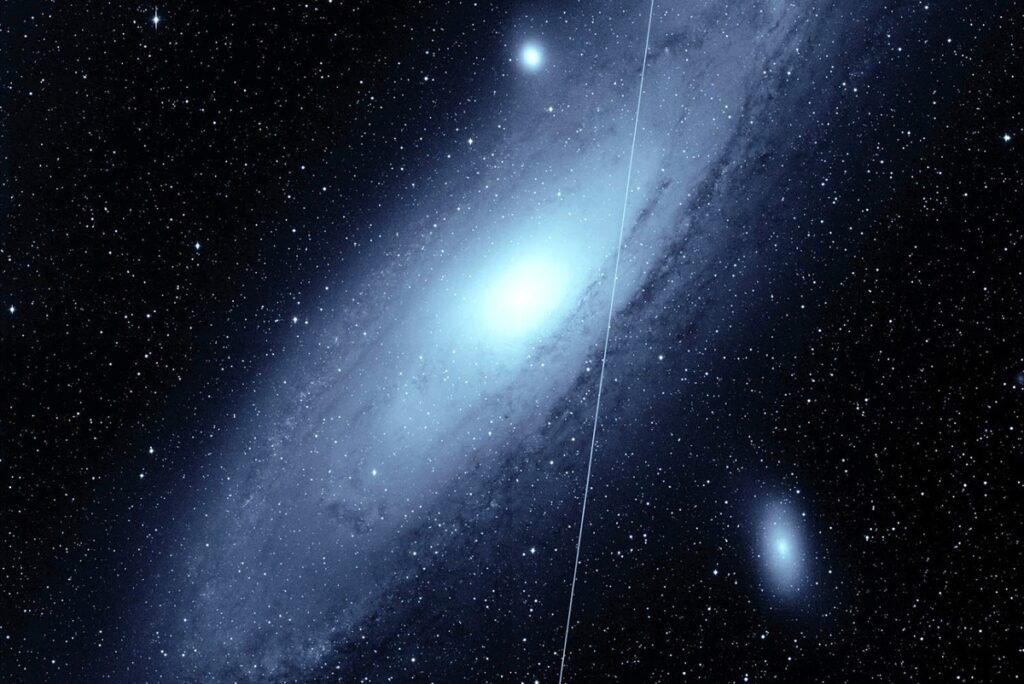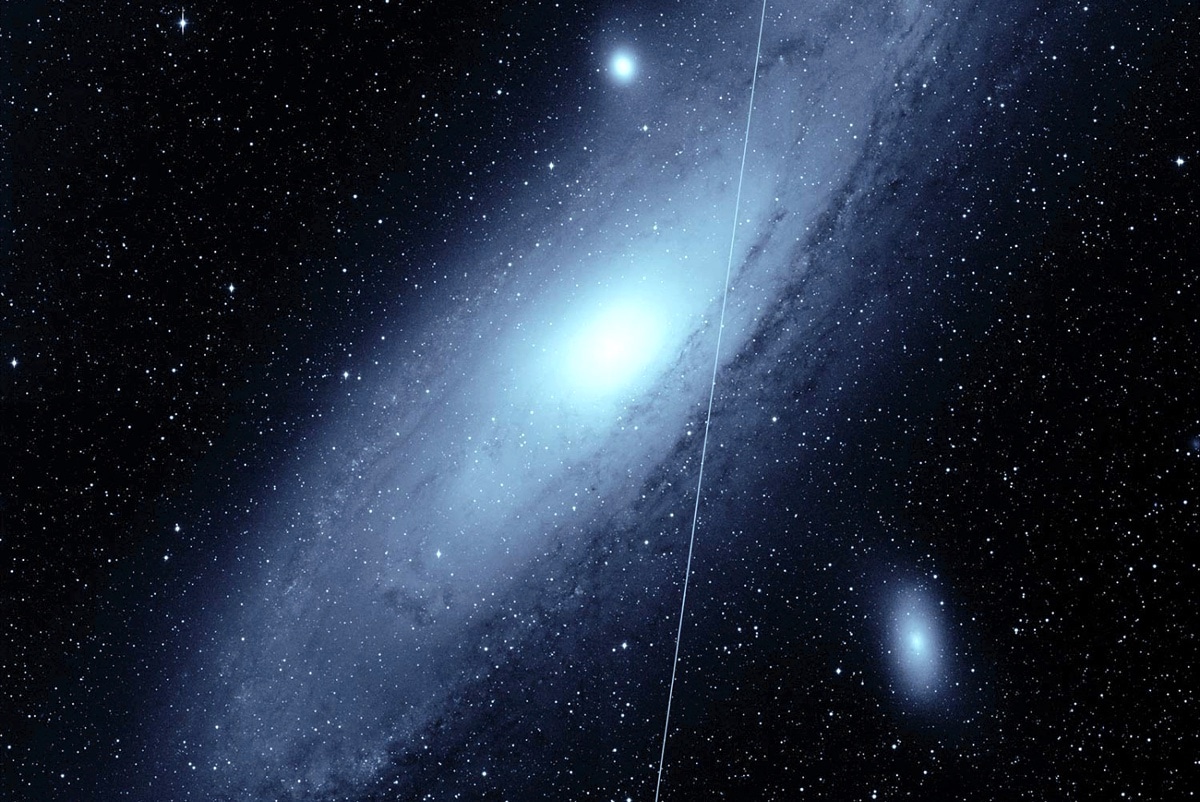
The more low-orbiting Starlink constellation becomes numerous, the more astronomical images are spoiled by overflights of its satellites.
The Zwicky Transient Facility (ZTF) at the Palomar Observatory in California monitors fast transient sources in the visible and infrared wavelengths. Therefore, satellites and other bright objects in near space have a noticeable effect on its operation, leaving long “dashes” in their orbital motion. And the more numerous the Starlink “megagroup” becomes, the more images become corrupted. This is discussed in a new article published in The Astrophysical Journal Letters.
SpaceX has been deploying the Starlink flotilla since 2018. More than 1,800 vehicles have already been deployed in low-Earth orbit to provide broadband Internet access. At an altitude of about 550 kilometers, they are visible even to the naked eye and increasingly interfere with astronomical observations. Scientists have long been sounding the alarm, fearing that when the grouping will reach the promised scale – about 40 thousand satellites – work on many ground-based telescopes will be virtually stopped.
Starlink’s satellites are growing in number
SpaceX acknowledges the problem, but solves it without much enthusiasm. Thus, the company began using additional non-glare coating and blackout visors on all the new withdrawal apparatuses, but astronomers note that this is not enough. Negotiations and discussions continue, and meanwhile Starlink’s satellites are growing in number.
To assess their impact, Przemek Mróz and his colleagues at the University of Warsaw looked at data collected by ZTF over the past few years while the low-orbit flotilla was building up – between November 2019 and September 2021. The instrument takes a complete survey of the sky every two nights, allowing them to catalog fast-moving transient sources – whether they are supernova flares or moving comets and asteroids.
In these images, Mrouse and co-authors identified a total of 5,301 blazes left by satellites. As might be expected, their number is increasing rapidly over time: while Starlink satellites spoiled 0.5 percent of all images in 2019, by the end of 2021 they will have spoiled 20 percent. That’s an impressive increase – dozens of times. Scientists fear that when the constellation reaches 10,000 (SpaceX plans to achieve this by 2027), observations will become virtually impossible.
Attempts to obscure the satellites do not save the situation. Scientists estimate that their brightness has dropped several times, to a stellar magnitude of 6.8, due to extra coverage and visors. This corresponds to the faintest stars visible to the naked eye, but does not fit in with the recommendations made by experts in 2020, at the workshop Satellite Constellations 1 (SATCON1), which was devoted to this new astronomical problem.





